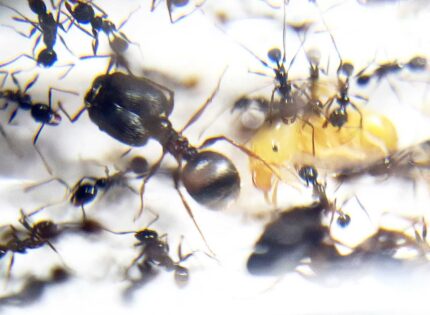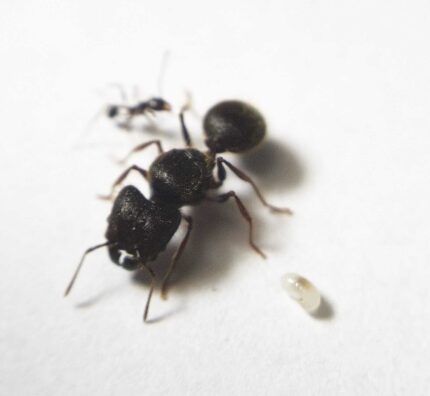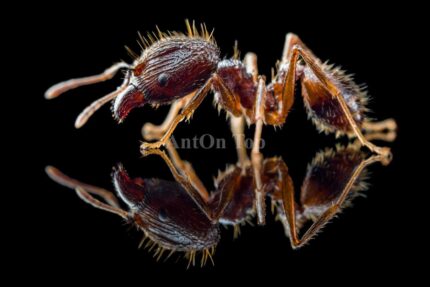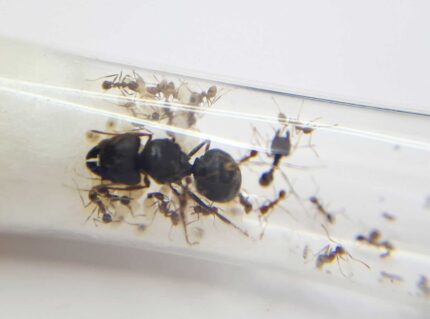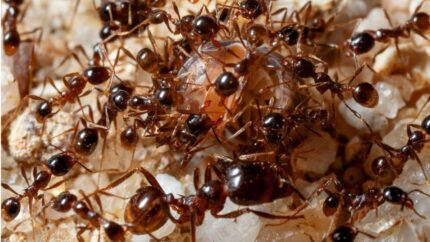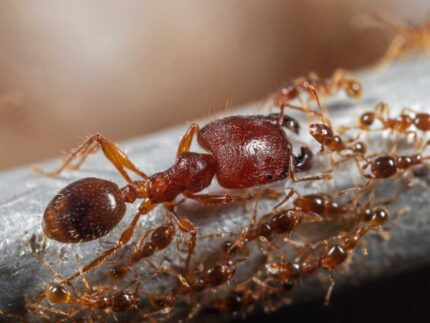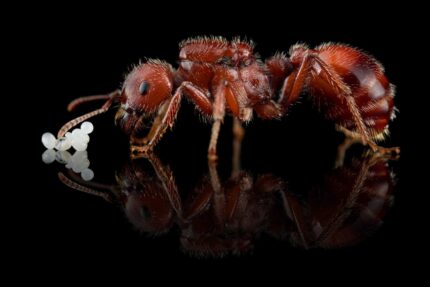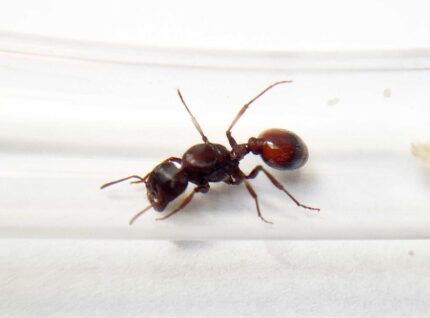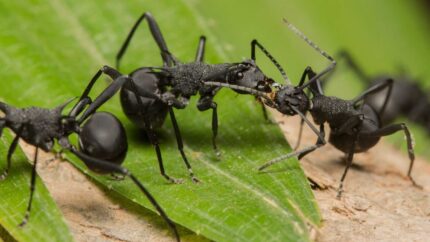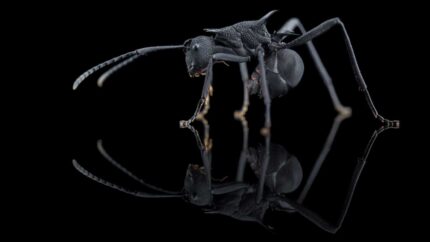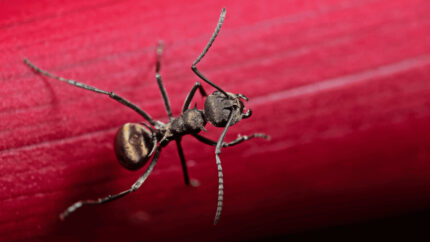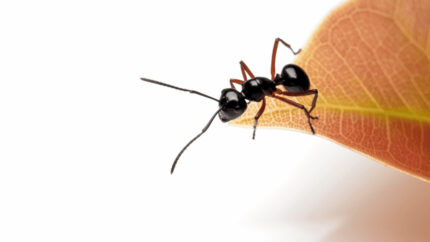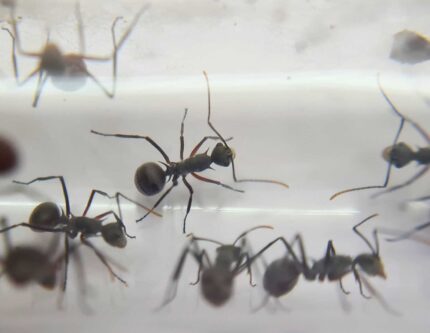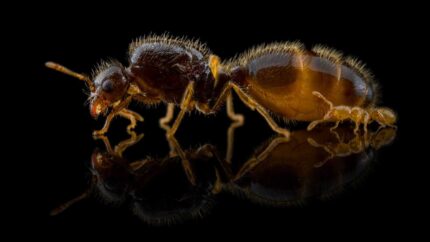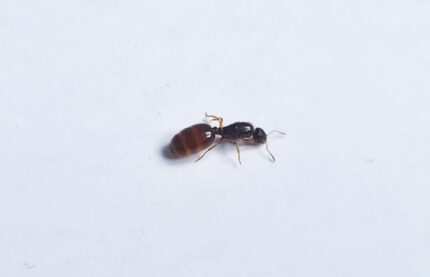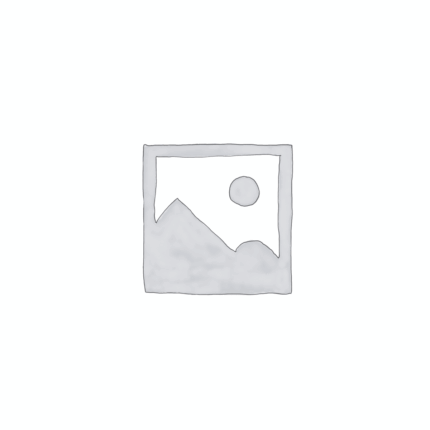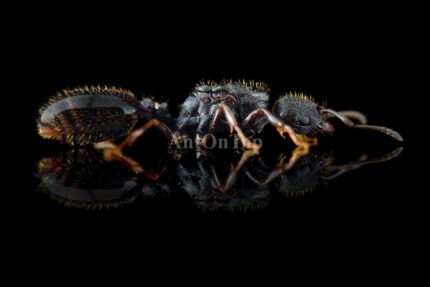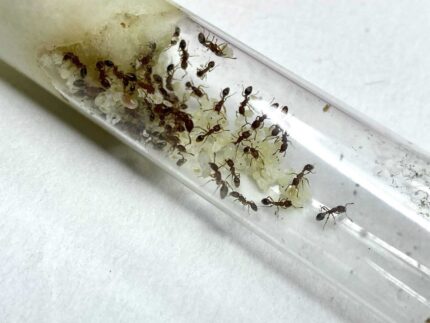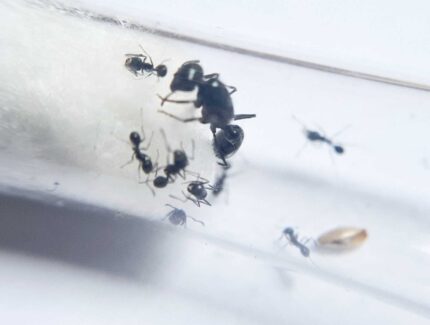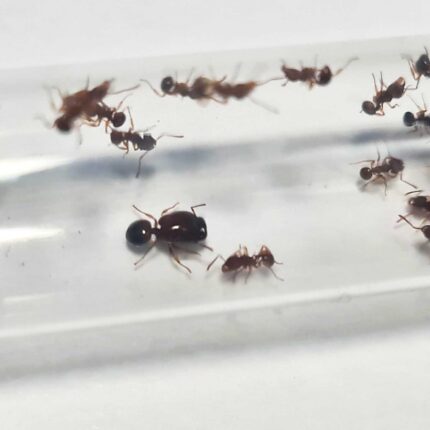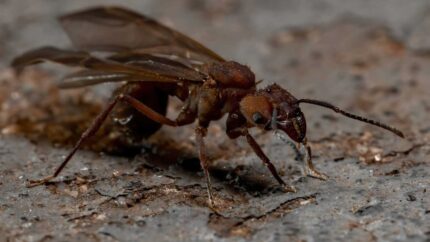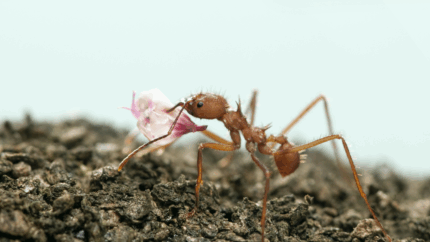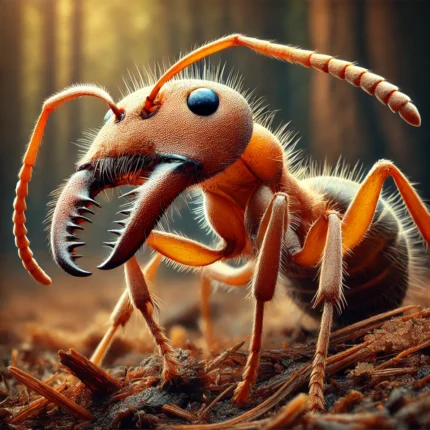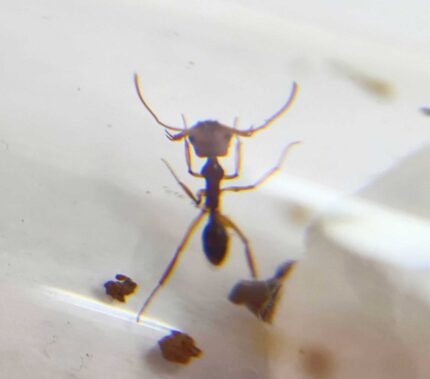Pogonomyrmex rugosus
389,90 zł – 729,90 złPogonomyrmex rugosus is a monogynous ant species with colony sizes of up to 10-15 thousand individuals. They have a medium development rate and their queen is 10-12mm in size while workers are 5-7mm. They have a dark brown color with a dark orange abdomen and feed on food insects and seeds. They prefer a humidity level of 40-60% in the arena and 50-60% in the nest.
Polyrhachis armata
279,90 zł – 439,90 złPolyrhachis armata is a monogynous ant species with a colony size of up to 10,000 workers. These ants grow fast and have a queen size of 13-17mm and worker size of 8-12mm. They have a black color and their nutrition includes food insects, syrup, fruits, vegetables, jelly, and cooked chicken without salt. They require a humid environment.
Polyrhachis dives
169,90 zł – 269,90 złPolyrhachis dives is a polygynous ant species with colony sizes of up to 10,000 workers. They have a fast development speed and the queen measures 9-12mm while workers are 6-9mm in size. They are gray in color with golden hairs on the abdomen. Their diet consists of food insects, syrup, fruit, vegetables, jelly, and cooked chicken without salt.
Polyrhachis laevissima
279,90 złPolyrhachis laevissima is a polygynous ant species with colony sizes of up to 5000 individuals. They have a fast development speed and come in various sizes, with queens measuring 8-11mm and workers measuring 4-7mm. They have a glossy black color and their diet consists of food insects, syrup, fruits, vegetables, jelly, and cooked chicken without salt.
Polyrhachis muelleri
355,90 zł – 649,90 złPolyrhachis muelleri is a polygynous ant species with colonies of up to 10,000 workers. They have a fast development speed and range in size from 7-12mm. These ants have gray-skinned bodies with a dark red abdomen. They require a diet of food insects, syrup, fruit, vegetables, jelly, and cooked chicken without salt.
Solenopsis fugax
59,90 zł – 299,90 złSolenopsis fugax is a monogynous ant species with colonies of up to 100,000 workers. They have a fast development rate. The queen measures 6-8 mm, while workers measure 1.5-2.5 mm and are yellow in color. They feed on food insects, syrup, fruit, vegetables, jelly, and cooked chicken without salt. The ant colony requires humidity.
Temnothorax unifasciatus
59,90 zł – 99,90 złTemnothorax unifasciatus is a tiny, peaceful species forming small colonies in acorns or rock cracks. Best suited for natural-style micro formicaria and hobbyists who enjoy detailed ant behavior on a miniature scale.
Veromessor pergandei
309,90 zł – 419,90 złVeromessor pergandei is a monogynous ant species with colony sizes of up to 5000 workers. The development rate of the colony is medium. The size of the queen is 12-16mm and workers are 10-12mm. The ants have a black head and belly, with an orange-red to dark red chest. Their nutrition consists of food insects, syrup, and fruits.
Acanthomyrmex Mizunoi
Acanthomyrmex mizunoi ist eine polygynische Ameisenart mit Kolonien, die bis zu 1000 Arbeiter enthalten können. Die Entwicklungsgeschwindigkeit dieser Art ist mittel. Die Ameisen variieren in der Größe, mit der Königin von 4-6 mm, Arbeitern von 3-4 mm und Majors von 5-8 mm. Sie haben eine braun-rote Färbung. Ihre Ernährung besteht aus Nahrungsinsekten, Sirup, Früchten, Gemüse, Gelee und gekochtem Huhn ohne Salz.
Acanthomyrmex mizunoi
289,90 zł – 449,90 złAcanthomyrmex mizunoi is a polygynous ant species with colonies that can contain up to 1000 workers. The development rate of this species is medium. The ants vary in size, with the queen measuring 4-6 mm, workers 3-4 mm, and majors 5-8 mm. They have a brown-red coloration. Their diet consists of food insects, syrup, fruits, vegetables, jelly, and cooked chicken without salt.
Anochetus Graeffei
Anochetus graeffei ist eine monogynische Ameisenart mit einer Koloniegröße von bis zu 600 Arbeitern. Sie haben eine mittlere Entwicklungsgeschwindigkeit und sind orange-braun gefärbt. Sie ernähren sich von lebenden Nahrungsinsekten wie Kakerlaken und Grillen sowie süßen Früchten. Sie bevorzugen eine Arenaluftfeuchtigkeit von 50-70% und Nester mit Feuchtigkeitswerten von 70-90%. Die optimale Arenatemperatur für sie liegt zwischen 24-30°C.


